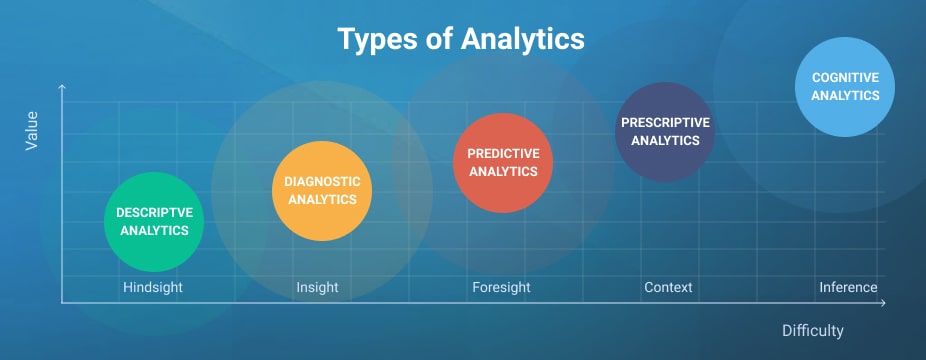Solution Architect Data Analytics – All You Need To Know
Table of Contents
We all know that data is becoming increasingly important in today’s business world. But what exactly is a solution architect data analytics? This article will give you a crash course on everything you need to know about this exciting field!
Who is a Solution Architect?
A solution architect is a professional who is responsible for designing, overseeing, and implementing technical solutions for businesses. They work with clients to understand their business needs and objectives. So then develop a plan to meet those needs using technology. Solution architects typically have a background in engineering or computer science, and they must be well-versed in a variety of technologies to be successful in their role.
Data analytics is a critical component of many businesses today. And solution architects play a vital role in ensuring that data analytics solutions are designed and implemented effectively. As businesses increasingly rely on data to make decisions, it is essential that solution architects have a strong understanding of data analytics concepts and tools. In this article, we will explore the role of the solution architect in data analytics, including the responsibilities of this position and the skills required to be successful.
Roles and responsibilities of solution architect
- Studying the technology environment.
- The analysis of specifics about the company.
- Documenting and analyzing the needs.
- Establishing the framework for collaboration.
- Designing a prototype for a solution.
- Participating in the selection of technology.
- Controlling solution development.
What is Data Analytics?
Data analytics is the process of analyzing data to extract valuable insights. It involves using various techniques, such as statistical analysis, machine learning, and data visualization, to make sense of data.
Data analytics can be used to solve various business problems, such as identifying trends, detecting fraudulent activity, and optimizing marketing campaigns. With the right tools and skills, data analytics can help you make better decisions and improve your business.
The Different Types of Data Analytics

There are many different types of data analytics, each with their own benefits and drawbacks. Here, we will take a look at some of the most popular types of data analytics so that you can make an informed decision about which one is right for you.
Descriptive Analytics
Descriptive analytics is all about understanding what has happened in the past. This type of data analytics can help you to identify patterns and trends, allowing you to make better decisions in the future. However, descriptive analytics alone cannot tell you why something happened, so it is often used in conjunction with other types of data analytics.
Prescriptive Analytics
Prescriptive analytics takes predictive analytics one step further by not only trying to predict what will happen in the future, but also suggesting what actions should be taken to achieve a desired outcome.
Predictive Analytics
Predictive analytics uses historical data to try and predict what will happen in the future. This type of data analytics can be extremely valuable for businesses as it can help them to make decisions about where to invest their resources. However, predictive analytics is not always accurate, so it is important to use it alongside other types of data analytics.
Pros and Cons of Data Analytics
There are many different facets to data analytics, and each has its own set of pros and cons. Here, we will take a look at the pros and cons of data analytics from the perspective of a solution architect.
Pros:
- Data analytics can help you understand your customers better and identify areas where your product or service can be improved.
- Data analytics can also help you optimize your marketing campaigns, making them more effective and efficient.
- Data analytics can also help you improve your operational processes, making them more efficient and reducing costs.
Cons:
- Data analytics can be complex and time-consuming to set up and maintain.
- If not used correctly, data analytics can lead to inaccurate results that can mislead decision-makers.
What do Solution Architects do with Data Analytics?
As a solution architect, you are responsible for ensuring that the data analytics infrastructure is able to support the business goals of the company. This includes working with data scientists to develop models and algorithms. So that can turn data into insights, as well as working with IT staff. Which can ensure that the data analytics infrastructure is scalable and reliable. In addition, you will also need to be able to communicate complex technical concepts to non-technical staff, so that they can understand how data analytics can be used to improve business performance.
How to use Data Analytics in your business
As a business owner, you’re always looking for ways to improve your company’s bottom line. One way you can do this is by using data analytics to make informed decisions about your business.
Data analytics can help you understand your customers better and figure out what marketing strategies are working well for your business. Additionally, data analytics can help you optimize your website and improve your overall operations.
If you’re not already using data analytics in your business, now is the time to start. Here are a few tips on how to get started:
- Figure out what data you need to collect.
Before you can start using data analytics, you need to figure out what data you need to collect. This will vary depending on your business goals, but some examples of data that can be useful for businesses include website traffic data, customer purchase history, and social media engagement metrics.
- Choose the right tools for collecting and analyzing data.
There are a variety of different data analytics tools available, so it’s important to choose the ones that are best suited for your needs. Some popular options include Google Analytics, Tableau, and Hadoop.
Conclusion
As a solution architect, it is your responsibility to understand the ins and outs of data analytics so that you can provide your company with the best possible solutions. With this article, we have provided you with a crash course on data analytics, covering everything from what it is to how to go about solving problems with data. We hope that this has been informative and has given you a better understanding of how to approach data-related issues in your business. Thanks for reading!
Read More: Tranny-Tubes
